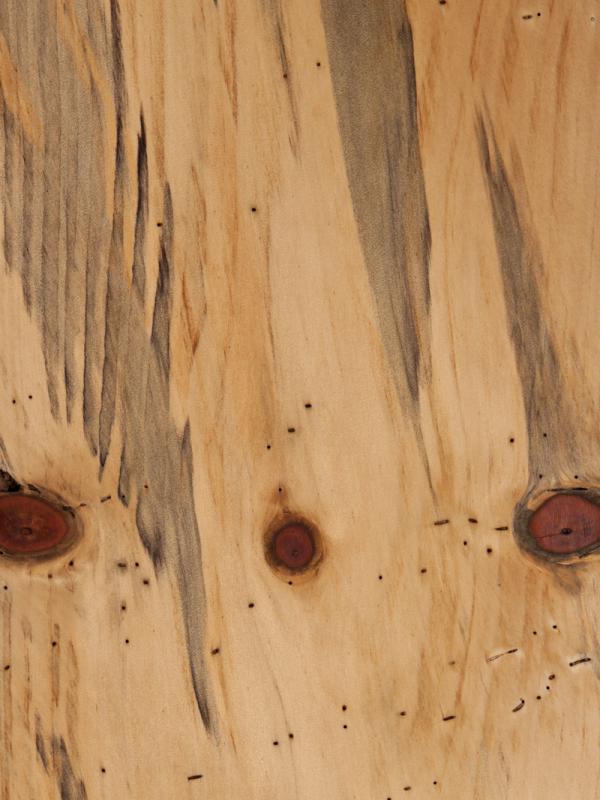
Family: Araucariaceae, the araucaria family.
Origin:Norfolk Island pine is native only to Norfolk Island between New Zealand and New Caledonia in the South Pacific. It has since been introduced as an ornamental and plantation species in tropical climates all over the world.
Other common names: Araucaria, Christmas-tree and siete pisos.
The tree: It is a conifer of majestic and symmetrical proportions, growing straight and tall to heights of 200 ft. with trunk diameters of 9 ft. The branches are horizontal in whorls of 4 to 7 with 2 forms of leaves; the juvenile leaves are curved, narrow and triangular at the cross section and the mature leaves are a broad, curved, pointed scale. The bark is blackish with contrasting, white resin drops.
Appearance: The heartwood is creamy, tan-brown and not clearly demarcated from the straw colored sapwood. It has highly contrasting dark red-brown knots throughout the wood. The grain is straight with a fine, even texture and a high luster.
Density: Average reported specific gravity is 0.42(ovendry weight/green volume), equal to an air-dried weight of 31 pcf. Janka hardness is 650 pounds of force.
Drying & shrinkage: It is easy to air season with little or no degrade and movement in service is small. Average reported shrinkage values (green to ovendry) are 3.5% radial, 5.3% tangential and 8.9% volumetric.
Working properties: With its straight, even grain, it is easy to work with hand and machine tools although its knots may cause some torn or chipped grain when planed or sawn. It nails, screws and glues well and takes a fine finish.
Durability: It is nondurable and the sapwood is vulnerable to blue stain.
Uses: In the past some of the larger trees have been used as ships’ masts because of its long, straight length. Today its prime use is for turning bowls. Bowls turned from Norfolk Island pine exhibit interesting patterns due to the whorled branches that penetrate the stem to the pith.
Availability: The wood and bowl blanks are not generally available on the commercial market although it is easily found where the wood grows in abundance.